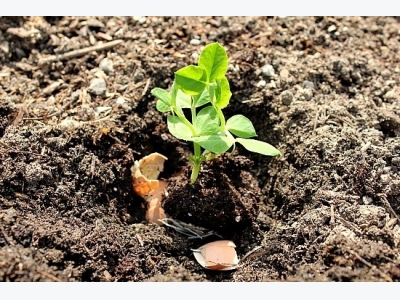What To Do If You Do Not Happen In Time After Transplanting The Seedlings Outdoors!

Afrwe holidays around the April and May, holidays are some of the reasons for another trip, but for lovers of gardening, this is a tough time when mass seedlings are transferred to open ground.
However, this activity does not always end successfully, mainly because of the meteorological factor.
The worst is the situation when the windy weather happened after the transplantation. The wind can just break the fragile plants, and it can even clutter them so it’s a pity to look at them. Still, do not despair when it does, and then field the seedlings and then feed it with superphosphate – 20-30 grams per 10 liters of water.
No less important is to stick 3 sticks around each damaged plant and wrap a newspaper around them, fastening it gently with clips so as to form a cone – it will protect the plants from the wind and somewhat from the sun and will give them the opportunity to strengthen.
If the leaves on the seedlings become white, the reasons may be 2 – either from the frost or from the sun. Feed the plants with urea, spray them with an immunophytocide and pat them properly. From the cold first the tops of seedlings will suffer – then wait for the shoots to appear, and when they grow, feed the plants with a complex fertilizer or a grass seedlings.
Nutrition with nitrogen should be moderate, because if we overcrow with hen and bovine fertilizer or with mineral nitrogen fertilizers, the plants will drain and lie down in the wind. However, they can be reinforced with combined fertilizers.
Phosphorous fertilizers will also work if the stems and leaves of the tomatoes have a slight bluish tint, as this is a sign of a shortage of the chemical element. It is enough to dissolve the spoon of superphosphate in 10 liters of water to expel the bluish shade. But if the weather is cold, the phosphorus will not reach the plants, so not always the feed works as successfully as we want.
Do not forget about the acidity of the soil. Tomatoes, for example, adapt to it, but they grow badly on carbonate – chlorosis occurs, and phosphorus deficiency is also evident. Cabbage, on the contrary – loves alkaline soils and grows poorly on those with high acidity. Therefore beets should be fed with lime on acidic soils, and tomatoes – with superphosphate, potassium sulphate and other “acidic” fertilizers on alkaline.
Related news
 Watermelon Farming Information Guide
Watermelon Farming Information Guide Watermelon is a warm, long-season crop and is now grown in all tropical and subtropical areas of the globe. This fruit mostly cultivated for its fresh juice
 Genetically modified roses can last a month
Genetically modified roses can last a month Roses for Valentine who donate in large quantities around the world could now significantly longer stay fresh, fragrant and beautiful.
 Diseases who attacks balcony plants
Diseases who attacks balcony plants The flowers that are constantly exposed to outside attacks various diseases and pests.